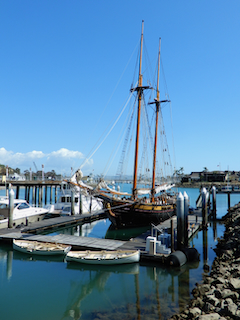
-
| 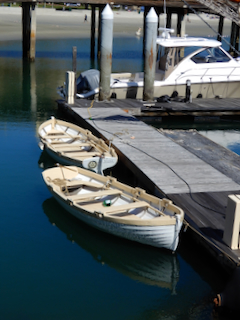
-
| 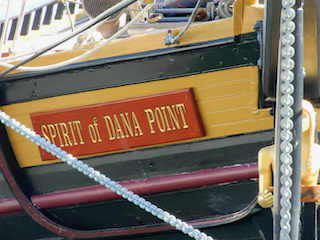
-
|
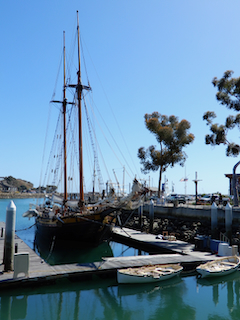
-
| 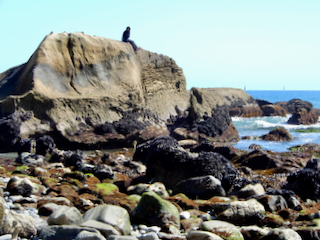
We visited Dana Point again, returning after our first field trip of the semester, not quite two months back.
Yesterday was a beautiful day and great low tide, but I was noticing it seemed the lowest zone marine critters, along with surfgrasses and kelps, seemed subject to stress.
Species that are rarely left exposed on warm afternoons like yesterday are lucky that here in SoCal, compared to other places including the Oregon coast, will fortunately
shift so that the lowest low tides will be pre-dawn, occasionally after dawn, about this time of year, every year. This particular year, it seems they must have also
experienced a relatively mild winter with few extended Santa Ana winds, and not too many students overheating either so far this semester.
| 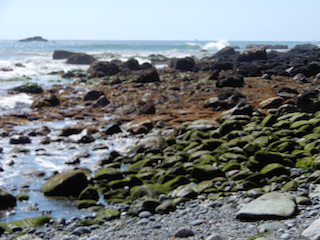
-
|
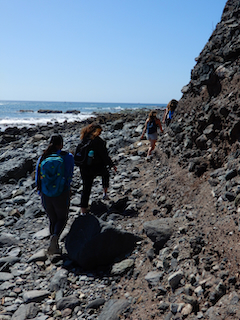
-
| 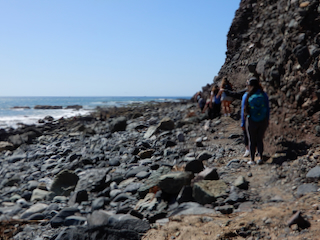
-
| 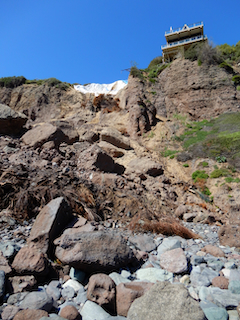
-
|
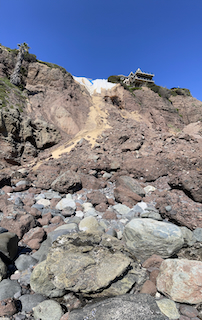
-
| 
It was news to me, but there was a landslide a few weeks ago near the only place along this headland where
there is a cliffside mansion, apparently a tourist attraction (no thanks), and was in the news back (see appended link). This occurred since we visited Dana Point in
January of this year. I am not so sure someone is still enjoying an ocean view up there. -- Youtube Link: Dana Point cliff
slide in the news
| 
-
|
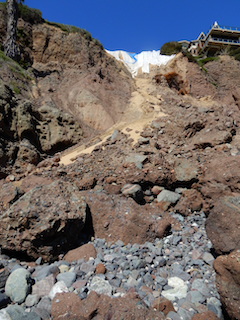
-
| 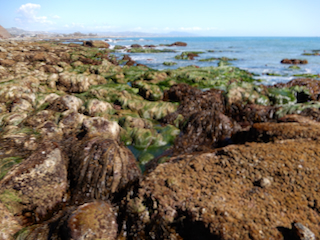
-
| 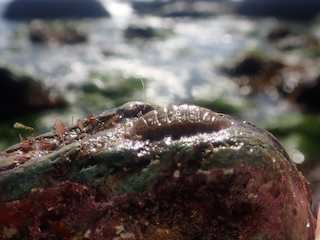
-
|
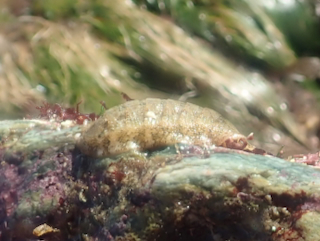
-
| 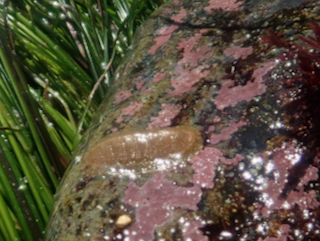
As usual, we saw many Lepidozona pectinulata on the undersides of low zone rocks.
| 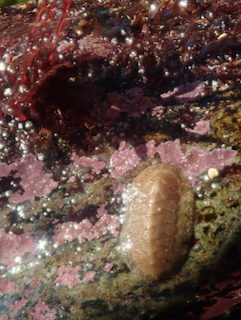
-
|
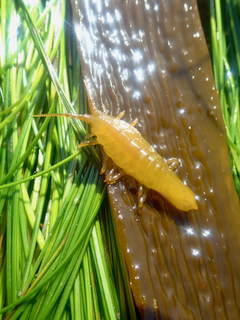
-
| 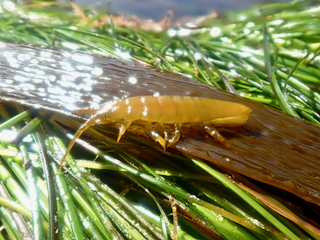
We probably found a larger specimen of the same isopod species, Pentidotea stenops, on our first field trip to Dana Point (see appended link). It is our
largest isopod species on kelp, up to 6 cm in length. Luckily, I rememebered what I learned from my colleague,
Dr. Tim Stebbins who besides his chiton studies with me is also an expert on southern California isopods. He kindly explained that the next time I should look the isopod in the eye.
In particular, I should check for its diagnostic eyeball shape. Be sure to click on the image to see better the elongated thin eyeballs, characteristic of P. stenops.
-- Link back to our first field trip: Image of a larger isopod of the same species.
| 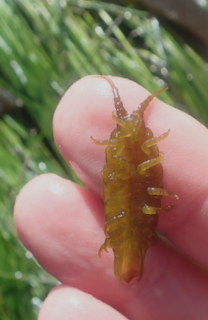
-
|
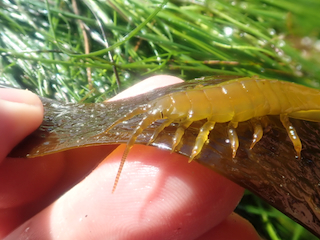
-
| 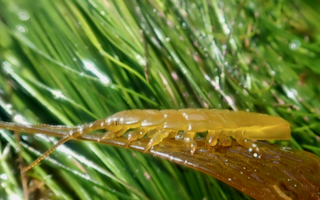
-
| 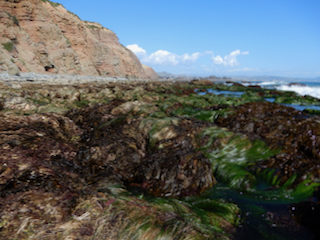
-
|
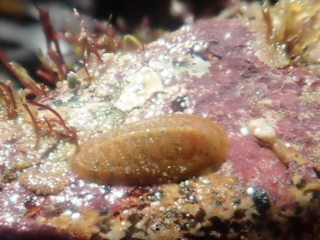
-
| 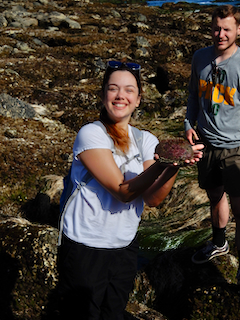
-
| 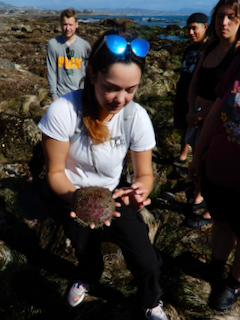
-
|
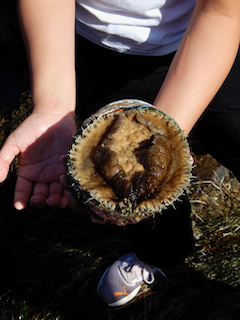
A Haliotis fulgens was only loosely attached on this warm afternoon unusually
low tide. We observed it briefly before a brief submersion and placing it back where we found it.
| 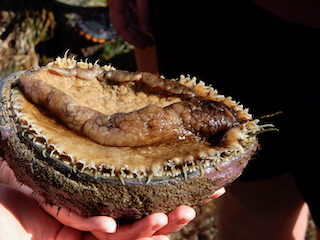
-
| 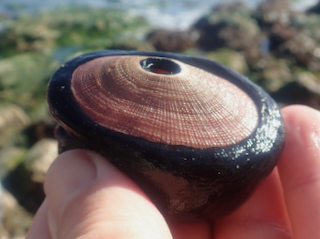
We saw juvenile, small adult, and normal adult giant keyhole limpets (Megathura crenulata).
|
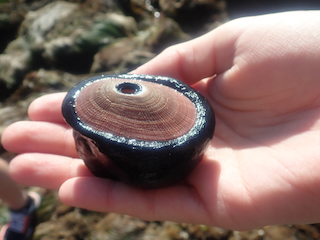
-
| 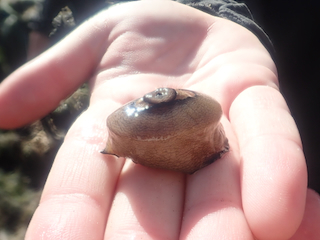
-
| 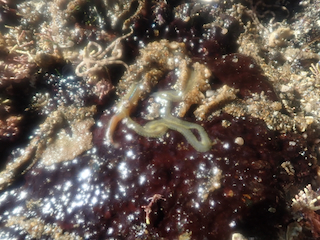
-
|
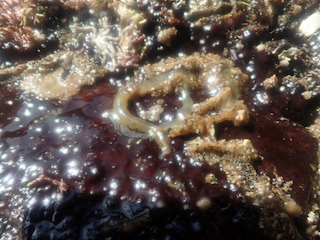
-
| 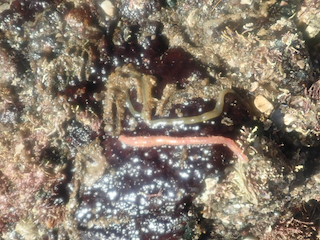
-
| 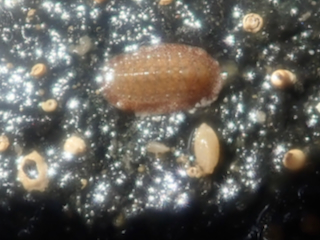
-
|
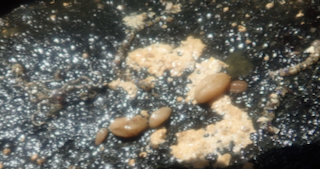
The clams are tentatively identified as Acar bailyi (miniature ark), which would make
the only common SoCal shallow water member of the ancient bivalve superfamily, Arcoidea, with most of the worldwide about 300 recognized species living in shallow
tropical seas. Ark clams
are easily recognized when the shells are separated by
their straight hinge line with taxodont dentition. There are quite few, mostly much larger, species that can be very common in the tropical Eastern Pacific, including
as fossils. A few of the living species have occasionally been found as far north as southern California. In contrast, A. bailyi is quite common attached to the
undersides of rocks, which is where the illustrated holotype specimen was collected, as described in 1931 by Smithsonian curator of fossil Cenozoic mollusks, Dr. Paul Bartsch
- (Source; see also Wikipedia article on Ark shells and
article by Marko and Moran, 2009).
| 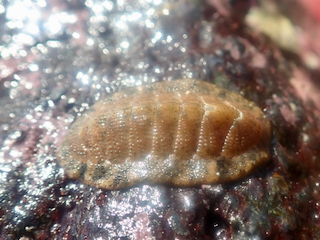
-
| 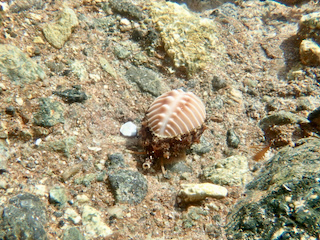
-
|
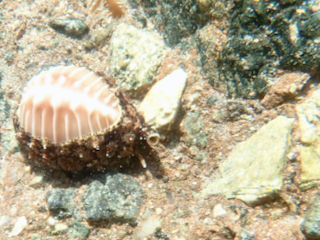
-
| 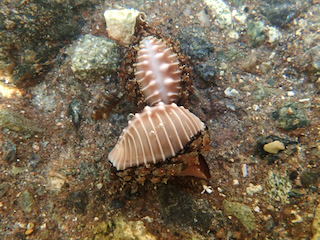
-
| 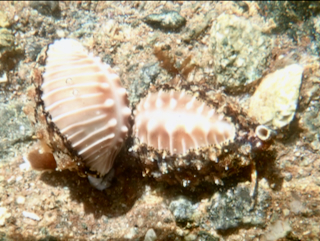
-
|
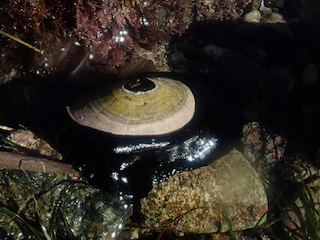
-
| 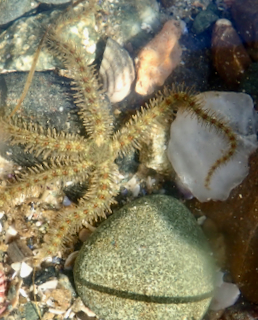
-
| 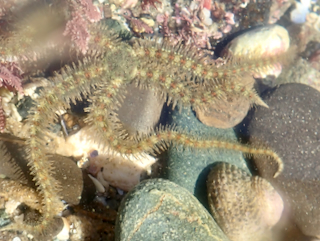
-
|
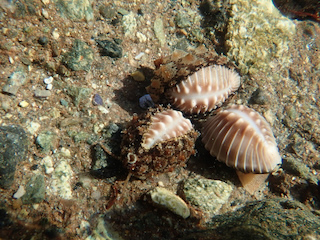
Altogether, students found four live Pusula solandri (Solander's trivia) within a
few minutes in the same general vicinity, brought together here temporariy in a tidepool.
| 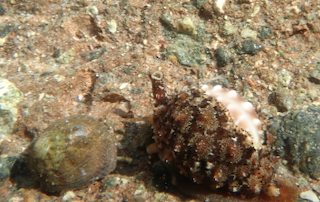
-
| 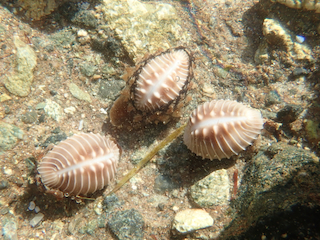
-
|
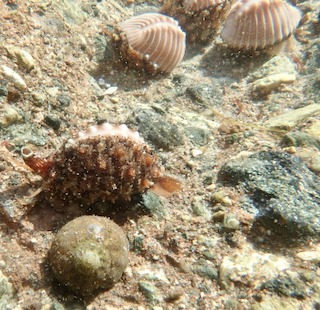
-
| 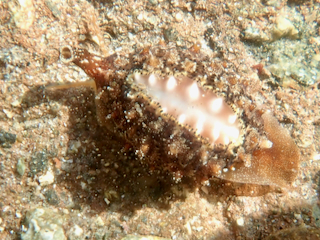
-
| 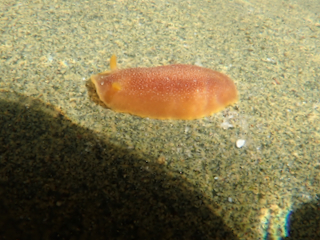
-
|
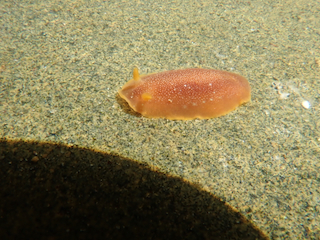
-
| 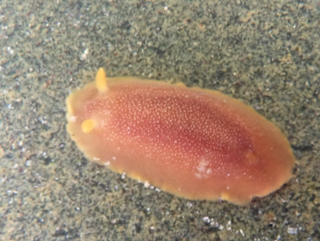
-
| 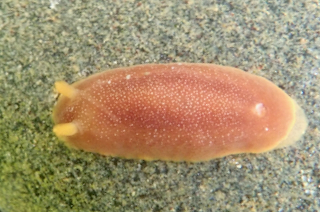
-
|
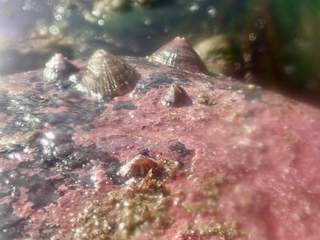
-
| 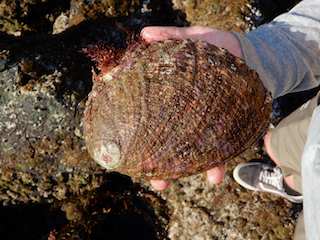
-
| 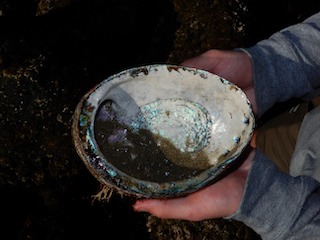
-
|
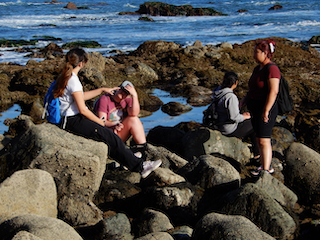
-
| 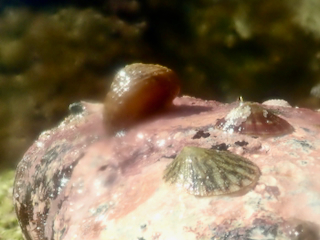
-
| 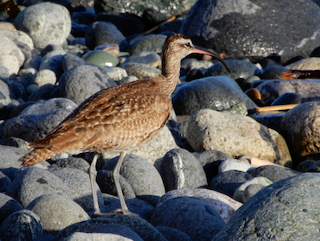
According to Wikipedia, since 2020 the New World whimbrels have been separated as a distinct species, Numenius hudsonicus,
from the Eurasian species. Our whimbrels still get around. They visit us en route between their Arctic breeding grounds migrating as far south as South America.
I did not see this one feeding but was impressed to watch the linked video to see how a whimbrel uses its downward curled bill to pull
fiddler crabs out of the sediment. Does it feed on sand crabs here at Dana Point? Maybe it can catch crabs running between cobbles.
- Mentioned Youtube video: Whimbrel feeding on fiddler crabs along the coast of Washington.
|
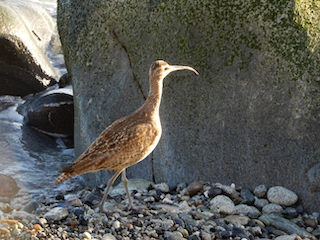
-
| 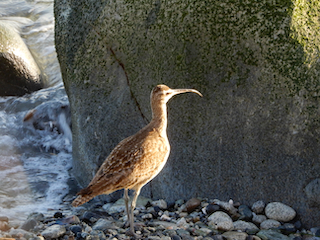
-
| 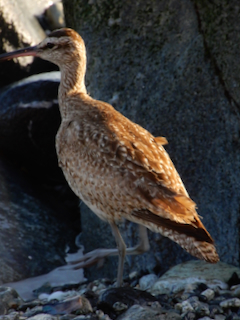
Possible lab practical question: Describe the rest of a whimbrel's beak accidentally cut off by the photographer.
Which other shorebird might we see on the upcoming Bolsa Chica wetlands field trip that has a similar shaped, but much longer, bill?
|
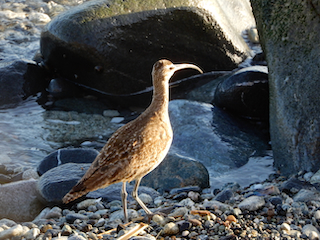
-
| 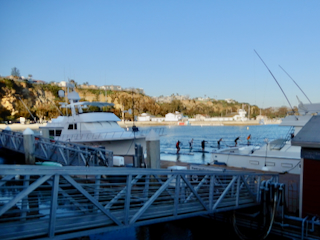
-
|
 Under Construction!
Under Construction! Under Construction!
Under Construction!